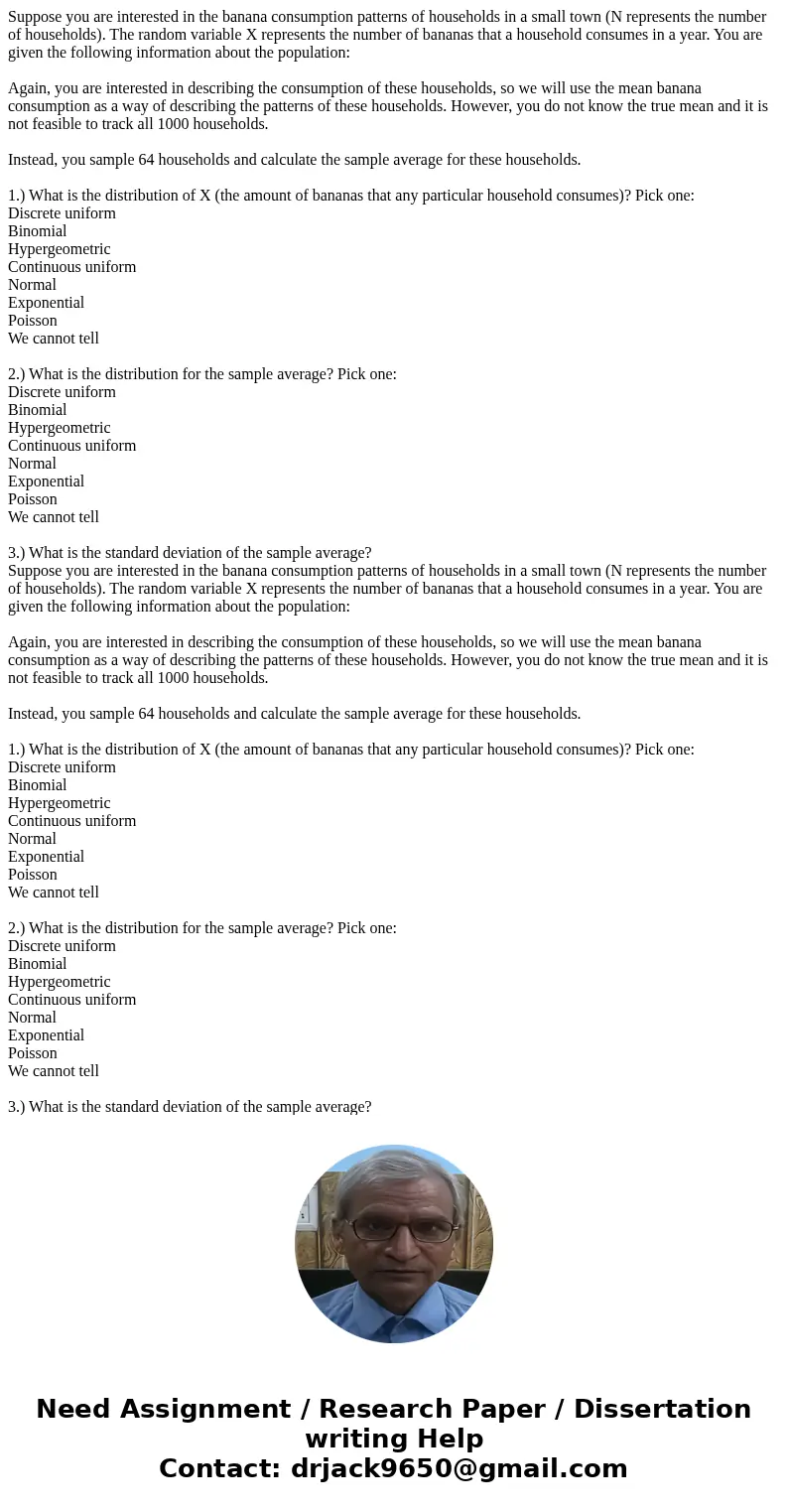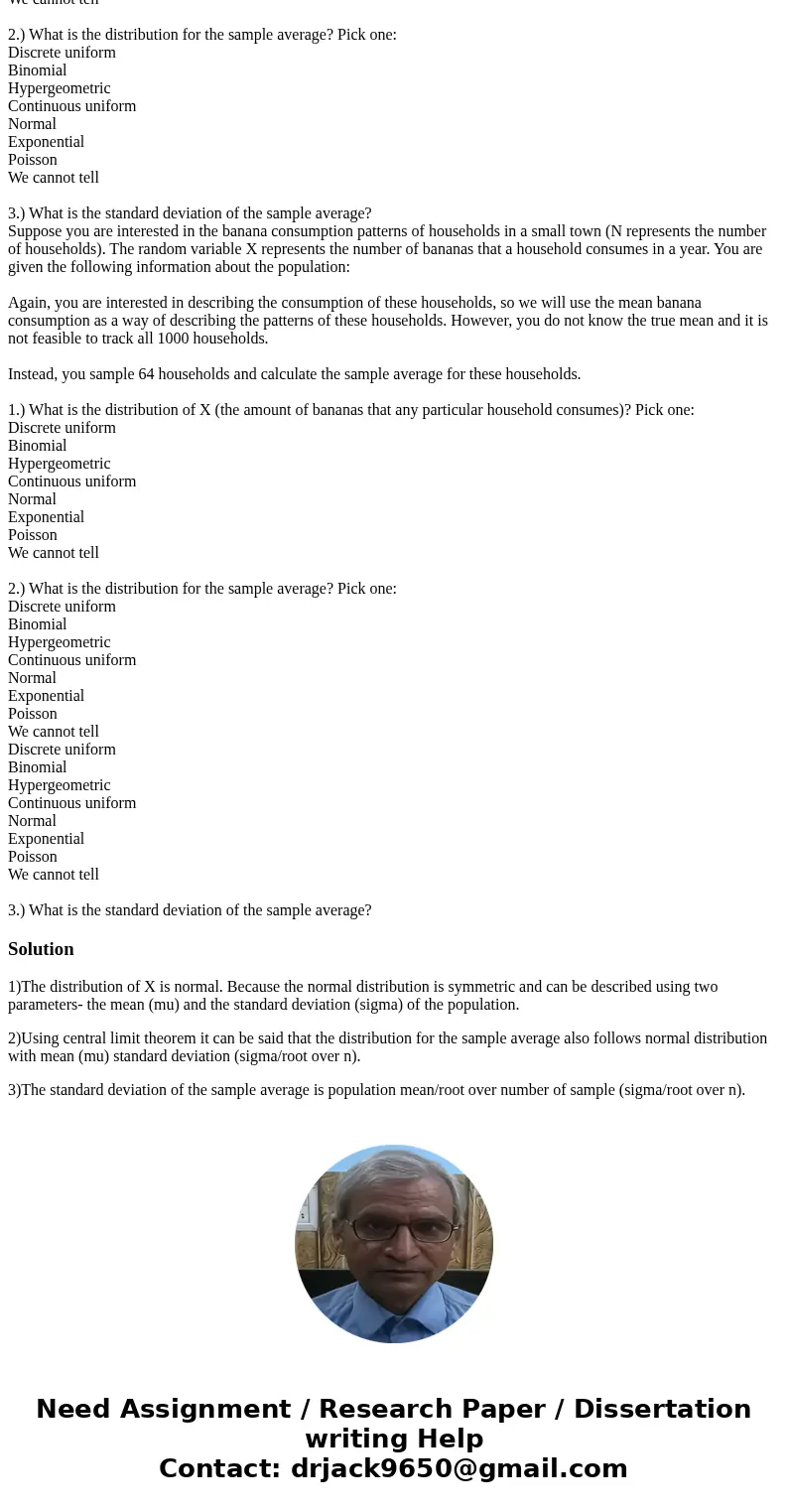Suppose you are interested in the banana consumption pattern
Suppose you are interested in the banana consumption patterns of households in a small town (N represents the number of households). The random variable X represents the number of bananas that a household consumes in a year. You are given the following information about the population:
Again, you are interested in describing the consumption of these households, so we will use the mean banana consumption as a way of describing the patterns of these households. However, you do not know the true mean and it is not feasible to track all 1000 households.
Instead, you sample 64 households and calculate the sample average for these households.
1.) What is the distribution of X (the amount of bananas that any particular household consumes)? Pick one:
Discrete uniform
Binomial
Hypergeometric
Continuous uniform
Normal
Exponential
Poisson
We cannot tell
2.) What is the distribution for the sample average? Pick one:
Discrete uniform
Binomial
Hypergeometric
Continuous uniform
Normal
Exponential
Poisson
We cannot tell
3.) What is the standard deviation of the sample average?
Suppose you are interested in the banana consumption patterns of households in a small town (N represents the number of households). The random variable X represents the number of bananas that a household consumes in a year. You are given the following information about the population:
Again, you are interested in describing the consumption of these households, so we will use the mean banana consumption as a way of describing the patterns of these households. However, you do not know the true mean and it is not feasible to track all 1000 households.
Instead, you sample 64 households and calculate the sample average for these households.
1.) What is the distribution of X (the amount of bananas that any particular household consumes)? Pick one:
Discrete uniform
Binomial
Hypergeometric
Continuous uniform
Normal
Exponential
Poisson
We cannot tell
2.) What is the distribution for the sample average? Pick one:
Discrete uniform
Binomial
Hypergeometric
Continuous uniform
Normal
Exponential
Poisson
We cannot tell
3.) What is the standard deviation of the sample average?
Suppose you are interested in the banana consumption patterns of households in a small town (N represents the number of households). The random variable X represents the number of bananas that a household consumes in a year. You are given the following information about the population:
Again, you are interested in describing the consumption of these households, so we will use the mean banana consumption as a way of describing the patterns of these households. However, you do not know the true mean and it is not feasible to track all 1000 households.
Instead, you sample 64 households and calculate the sample average for these households.
1.) What is the distribution of X (the amount of bananas that any particular household consumes)? Pick one:
Discrete uniform
Binomial
Hypergeometric
Continuous uniform
Normal
Exponential
Poisson
We cannot tell
2.) What is the distribution for the sample average? Pick one:
Discrete uniform
Binomial
Hypergeometric
Continuous uniform
Normal
Exponential
Poisson
We cannot tell
Discrete uniform
Binomial
Hypergeometric
Continuous uniform
Normal
Exponential
Poisson
We cannot tell
3.) What is the standard deviation of the sample average?
Solution
1)The distribution of X is normal. Because the normal distribution is symmetric and can be described using two parameters- the mean (mu) and the standard deviation (sigma) of the population.
2)Using central limit theorem it can be said that the distribution for the sample average also follows normal distribution with mean (mu) standard deviation (sigma/root over n).
3)The standard deviation of the sample average is population mean/root over number of sample (sigma/root over n).


 Homework Sourse
Homework Sourse